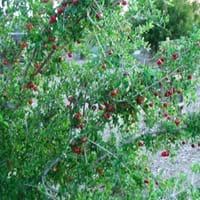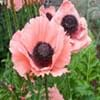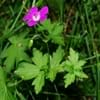Life Span
Annual and Perennial
Annual
Origin
Central America, South America
Central America, South America
Types
Not Available
Bush Beans, Pole Beans
Number of Varieties
Not Available
Habitat
Dry areas, Well Drained, Woodlands
Cultivated Beds
USDA Hardiness Zone
9-11
Not Available
AHS Heat Zone
Not Available
Not Available
Sunset Zone
Not Available
A1, A2, A3, H1, H2, 1a, 1b, 2a, 2b, 3a, 3b, 4, 5, 6, 7, 8, 9, 10, 11, 12, 13, 14, 15, 16, 17, 18, 19, 20, 21, 22, 23, 24
Habit
Thicket/Colonizing
Vining/Climbing
Flower Color
Pink
Lavender
Flower Color Modifier
Bicolor
Bicolor
Leaf Color in Spring
Light Green, Gray Green
Green, Purple
Leaf Color in Summer
Light Green, Gray Green
Green
Leaf Color in Fall
Light Green, Gray Green
Green
Leaf Color in Winter
Green
Not Available
Plant Season
Spring, Summer
Spring, Summer, Fall
Sunlight
Full Sun
Full Sun
Type of Soil
Loam, Sand
Loam, Sand
The pH of Soil
Alkaline
Neutral, Alkaline
Soil Drainage
Well drained
Well drained
Bloom Time
Spring, Summer
Indeterminate
Tolerances
Drought
Drought
Where to Plant?
Container, Ground, Pot
Container, Ground, Pot
How to Plant?
Cuttings, Seedlings
Seedlings
Plant Maintenance
Medium
Medium
Watering Requirements
Average Water Needs, Do Not over Water, Requires regular watering
Do Not over Water, Requires regular watering, Water evenly
In Summer
Lots of watering
Lots of watering
In Spring
Moderate
Moderate
In Winter
Average Water
Average Water
Soil pH
Alkaline
Neutral, Alkaline
Soil Type
Dry, Sandy
Loam, Sand
Soil Drainage Capacity
Well drained
Well drained
Sun Exposure
Full Sun
Full Sun
Pruning
In Early Autumn, Prune in winter, Remove branches, Remove damaged leaves, Remove dead branches, Remove dead leaves, Remove dead or diseased plant parts
Remove damaged leaves, Remove dead branches, Remove dead leaves
Fertilizers
Complete balanced fertilizer, iron-rich fertilizer
5-10-10 fertilizer
Pests and Diseases
Aphids, Red blotch, Whiteflies
Alternaria Leaf Spot, Anthracnose, Aphids, Armyworm, Bacterial Blight
Plant Tolerance
Wind
Drought
Flower Petal Number
Single
Single
Foliage Texture
Medium
Coarse
Foliage Sheen
Glossy
Matte
Attracts
Bees, Birds, Butterflies, pollinators
Not Available
Allergy
Pollen
no allergic reactions
Aesthetic Uses
Showy Purposes
Not Used For Aesthetic Purpose
Beauty Benefits
Good for skin
Beautiful Skin
Environmental Uses
Air purification, Food for birds, Nesting sites for birds, Windbreak
Fixes Nitrogen
Medicinal Uses
Antioxidants, Arthritis, Diarrhea, Dysentry, Fertility, Fever, Inflammation, Kidney problems, scurvy, Urinary tract problems, Vitamin C
Cancer, Diuretic, Homeopathy, Hypotensive, Miscellany
Part of Plant Used
Flowers, Fruits, Leaves, Root
Leaves, Seedpod, Seeds
Other Uses
Used As Food, Used as Ornamental plant, Used for making hedge
Used for making brown dye, Used in biomass, Used in in reviving woollen fabrics
Used As Indoor Plant
Yes
Yes
Used As Outdoor Plant
Yes
Yes
Garden Design
Rock Garden / Wall, Wildflower
Container, Edible, Herb, Vegetable, Vine
Botanical Name
Malpighia emarginata
PHASEOLUS vulgaris 'Purple King'
Common Name
Barbados cherry, West Indian cherry and wild crepe myrtle
String bean, Field bean, French bean
In Hindi
Acerola Tree
String Bean
In German
Acerola Baum
Bohne
In French
Acerola Arbre
Haricot vert
In Spanish
Árbol de acerola
String Bean
In Greek
Acerola Δέντρο
Αμπελοφάσουλο
In Portuguese
Árvore acerola
Feijão de corda
In Polish
Acerola Drzewo
Fasolka szparagowa
In Latin
Acerola ligno
Gloria Bean
Phylum
Not Available
Magnoliophyta
Class
Not Available
Magnoliopsida
Order
Malpighiales
Fabales
Family
Malpighiaceae
Fabaceae
Genus
Malpighia
Phaseolus
Clade
Angiosperms, Eudicots, Rosids
Angiosperms, Eudicots, Rosids
Tribe
Not Available
Phaseoleae
Subfamily
Not Available, Paperveroideae
Faboideae
Number of Species
Not Available
Not Available
Importance of Acerola and String Bean
Want to have the most appropriate plant for your garden? You might want to know the importance of Acerola and String Bean. Basically, these two plants vary in many aspects. Compare Acerola and String Bean as they differ in many characteristics such as their life, care, benefits, facts, etc. Every gardener must at least have the slightest clue about the plants he wants to plant in his garden. Compare their benefits, which differ in many ways like facts and uses. The medicinal use of Acerola is Antioxidants, Arthritis, Diarrhea, Dysentry, Fertility, Fever, Inflammation, Kidney problems, scurvy, Urinary tract problems and Vitamin C whereas of String Bean is Cancer, Diuretic, Homeopathy, Hypotensive and Miscellany. Acerola has beauty benefits as follows: Good for skin while String Bean has beauty benefits as follows: Good for skin.
Compare Facts of Acerola vs String Bean
How to choose the best garden plant for your garden depending upon its facts? Here garden plant comparison will help you to solve this query. Compare the facts of Acerola vs String Bean and know which one to choose. As garden plants have benefits and other uses, allergy is also a major drawback of plants for some people. Allergic reactions of Acerola are Pollen whereas of String Bean have no allergic reactions respectively. Having a fruit bearing plant in your garden can be a plus point of your garden. Acerola has showy fruits and String Bean has showy fruits. Also Acerola is flowering and String Bean is not flowering . You can compare Acerola and String Bean facts and facts of other plants too.





